I thought I’d squeeze another pipe onto the DadsPipes Store shelves in time for the Holiday buying season. This Stanwell is one of the last survivors of the Danish Lot of 30 or so estate pipes I purchased about a year and a half ago. It had been sitting in the refurb box for quite some time as I prioritized other projects ahead of what I figured would be an easy cleanup.
When I brought the pipe to the worktable, it was in decent overall shape. I was dirty, of course, and the stem and vulcanite shank extension were well oxidized, but the chamber had only a thin layer of cake and some debris to contend with. There was a bit of lava flowing from the chamber onto and over the crowned rim, but the stem was free of larger tooth dents, with only a little bit of chatter visible.
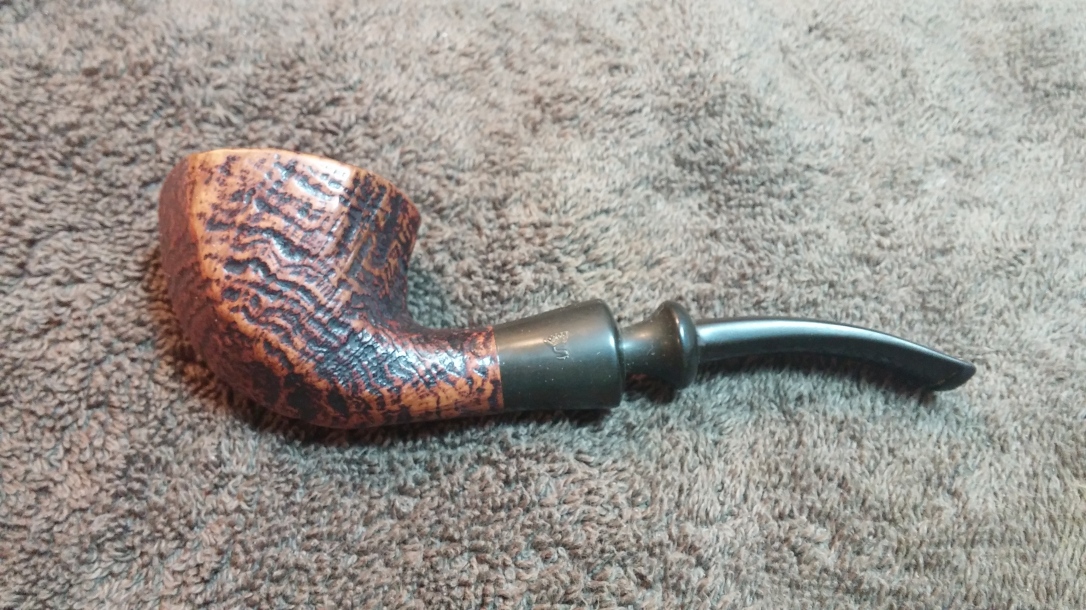

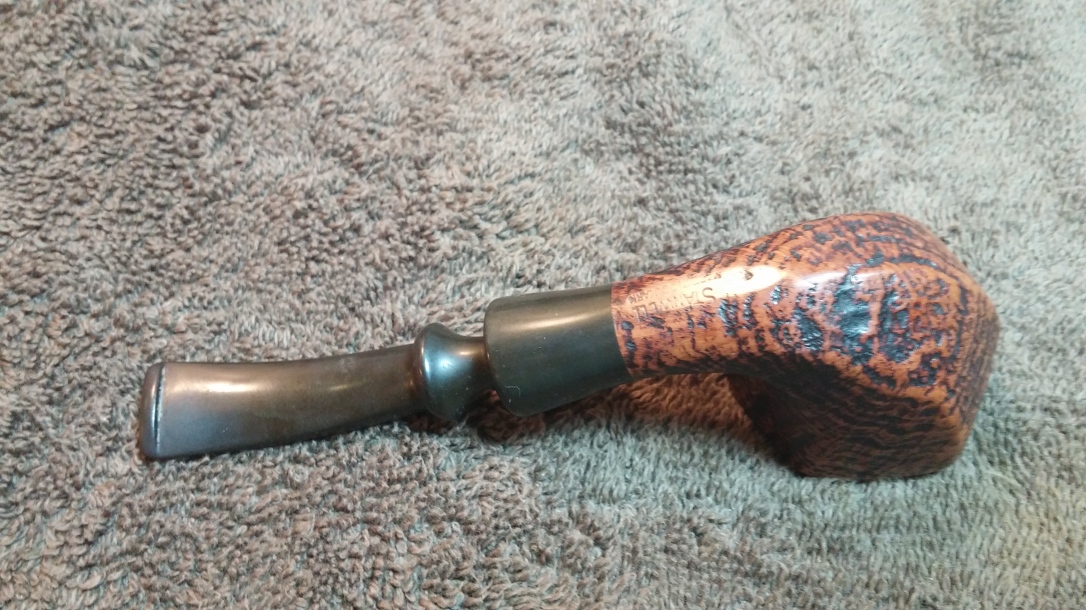
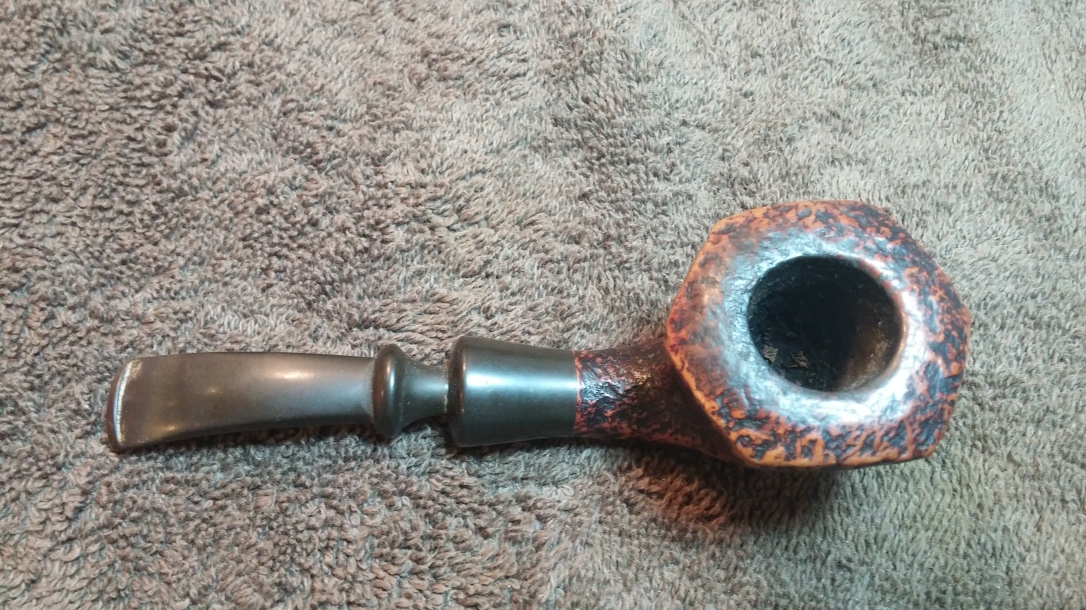

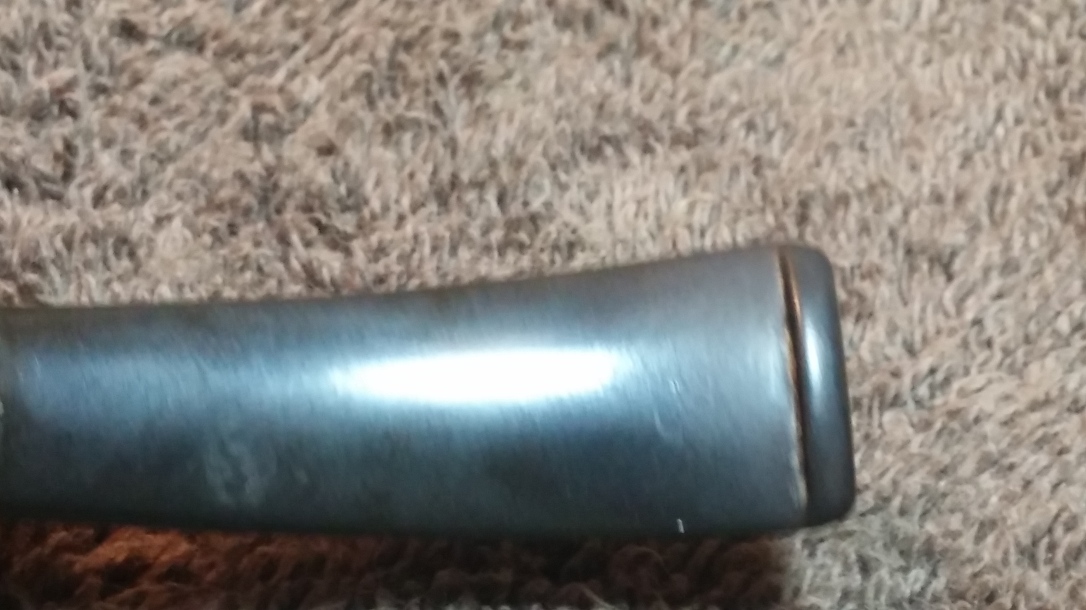

The left flank of the shank extension carries the Stanwell Crowned S logo, while the stummel is stamped “Stanwell” over “Made in Denmark” on the small flat patch on the underside.
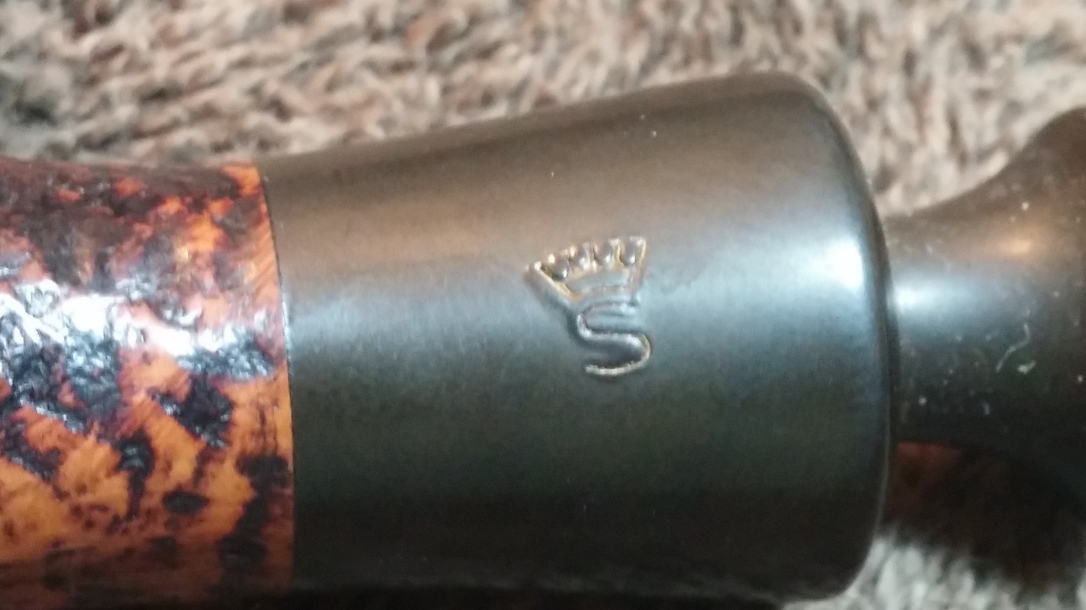
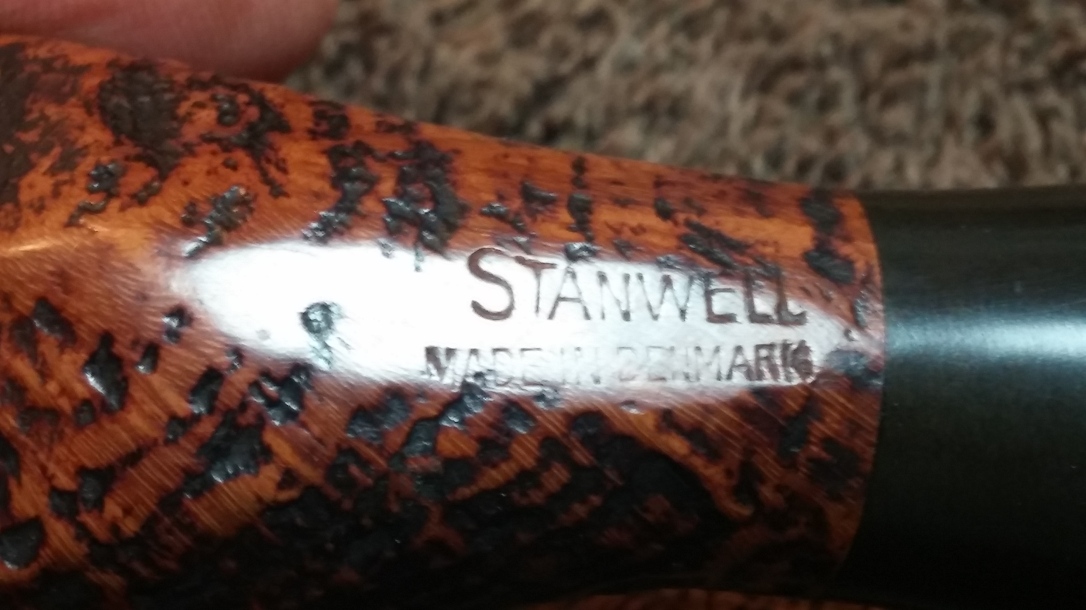
I reamed the chamber clear of old cake and smoothed the chamber walls with sandpaper wrapped around a marker. The chamber was in great shape, without fissures or scorches.

The stummel’s internals were surprisingly grimy. It took a fair pile of cotton swabs and pipe cleaners dipped in alcohol to get the accumulated dirt and tars out.

I used a brass tire brush to scrub the lava off the rim and out of the nooks and crannies of the sandblast finish, The brush is ideal here, as the bristles are stiff enough to scrape away the tars but soft enough not to scratch the briar.
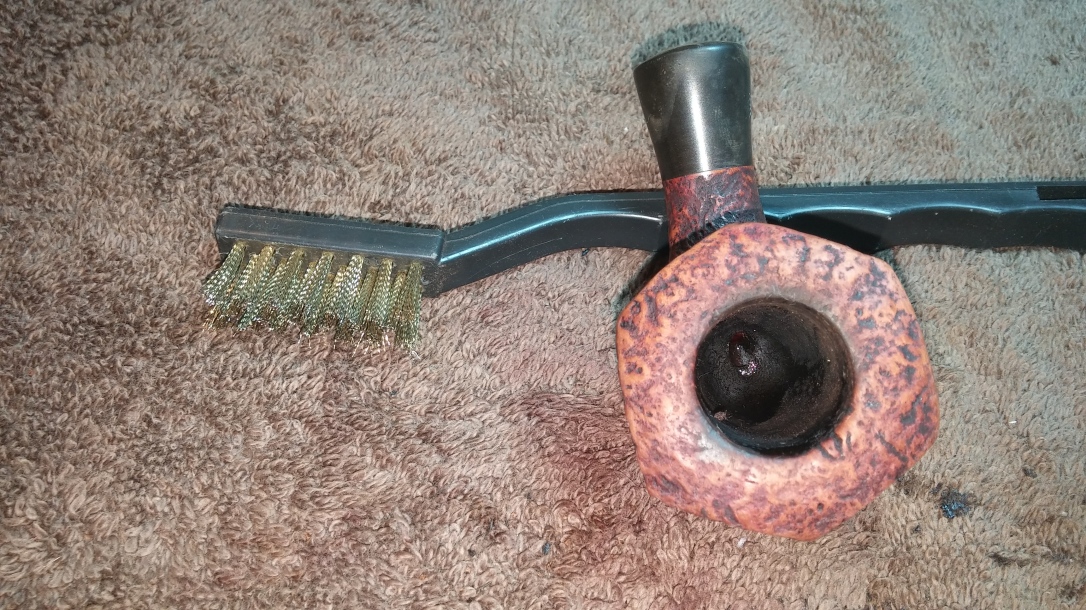
I finished off the stummel cleanup by polishing out the oxidation on the shank extension using micromesh sanding pads. Thankfully the oxidation here was lighter than the stem, which I could (and did) pop into an Oxyclean bath. As a last step to make this stummel ready for a new piper, I gave it a salt and alcohol treatment to remove the deeply ingrained tars inside the airway.
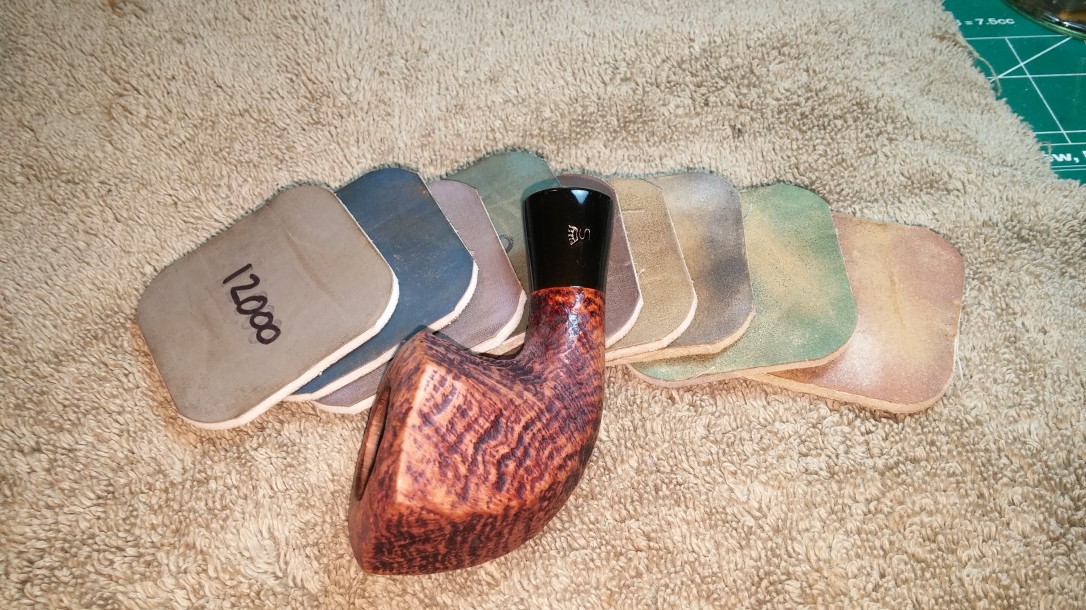
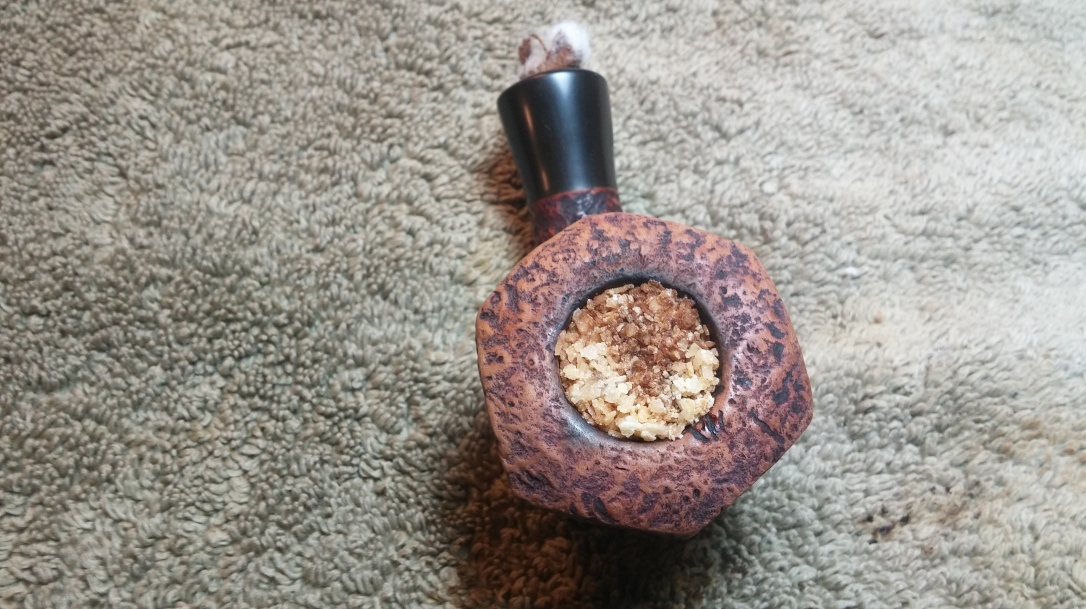
Setting the stummel aside to rest after its cleaning, I pulled the stem from the Oxyclean bath and ran a few pipe cleaners through it to tidy things up.

As is often the case, the stem fit loosely in the mortise now that there was no dirt and grime to tighten things up. I could tweak the size of the tenon to adjust the fit, but, again with the dirt and grime out of the way, I also realized that the stem was a replacement. Instead of being smooth, the stem surface had an orange peel texture, and the sides showed remnants of the factory molding marks. Apparently this stem was fitted quickly and without a great deal of concern about its appearance.
Arguably, the easiest course of action in this situation would have been to simply sand and polish the stem and refit it to the mortise. Instead, I decided to have a little fun. I’ve always appreciated Stanwell’s Hans Christian Andersen line of convertible pipes that come with two stems – one regular length stem and one long Churchwarden stem. The price of an HCA pipe is a bit steep for my regular pipe budget, though, so I’ve never pulled the trigger on a purchase.
I did, however, have a few Churchwarden stems in my stem box. After deliberating between a five inch long stem or an eight inch, I decided to go big and fit the eight inch stem to the Stanwell Horn stummel. This pic shows the rough stem below its soon-to-be briar.

The stem came with a thick tenon integrated into the end of the stem. I’d have to bring the diameter down to fit the Stanwell’s mortise. I used my rotary tool and a sanding drum for the rough sizing, quickly powering off the excess vulcanite. If you try this technique, I suggest working slowly and checking the fit regularly; you don’t want to get distracted here and sand through your tenon!

I fine-tuned the stem fit using files and sandpaper until the stem fit snuggly but easily into the mortise. I also filed a slight bevel into the edge of the stem at the base of the tenon. A square face would have looked odd with the military mount on the stummel.

All that was needed to finish off this restoration/conversion was a final sanding and polishing of the new stem to bring up the shine. I used 800 and 2000-grit wet sandpaper to erase the rough sanding scratches and let the buffer do the rest of the work. A run of White Diamond compound brought a deep shine to the vulcanite, and a few coats of Carnauba finished things off. You’ll also see that I added a gentle bend to the stem.
The finished pipe is nowhere near what I thought I’d end up with on this “easy cleanup”, but I do rather like the results. The stummel is well-executed and shows off the briar grain nicely. The hexagonal bowl shape and the “shell” sandblast finish combine to create a rather tactile experience, perfect for a Churchwarden pipe. Taken altogether, I think this Stanwell conversion is a more than acceptable alternative to a (much more expensive) Hans Christian Andersen pipe.
This pipe would make a lovely addition to any rack and rotation, or an especially fine Christmas gift for the piper on your list. It’s available in the DadsPipes Store now.
Thanks for following along on this somewhat unexpected refurbishment. Until next time, Happy Piping!
Here’s the finished pipe.
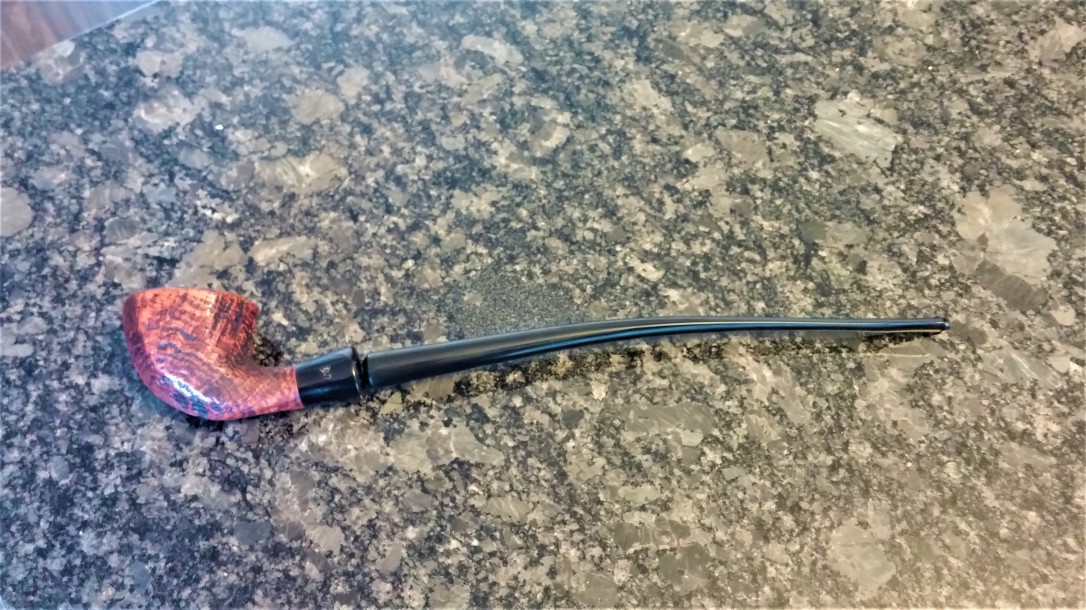



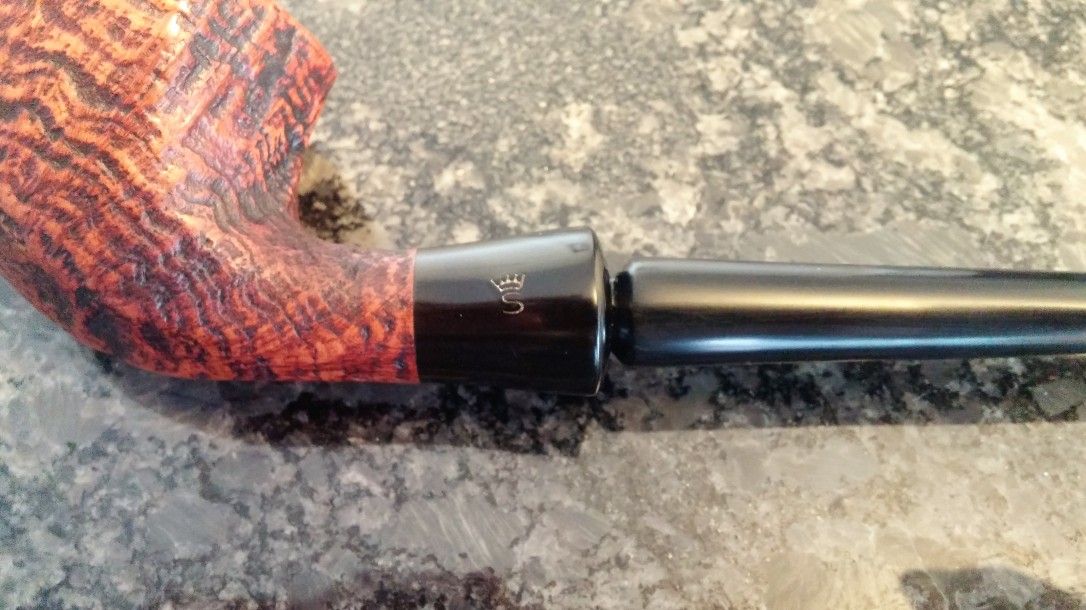
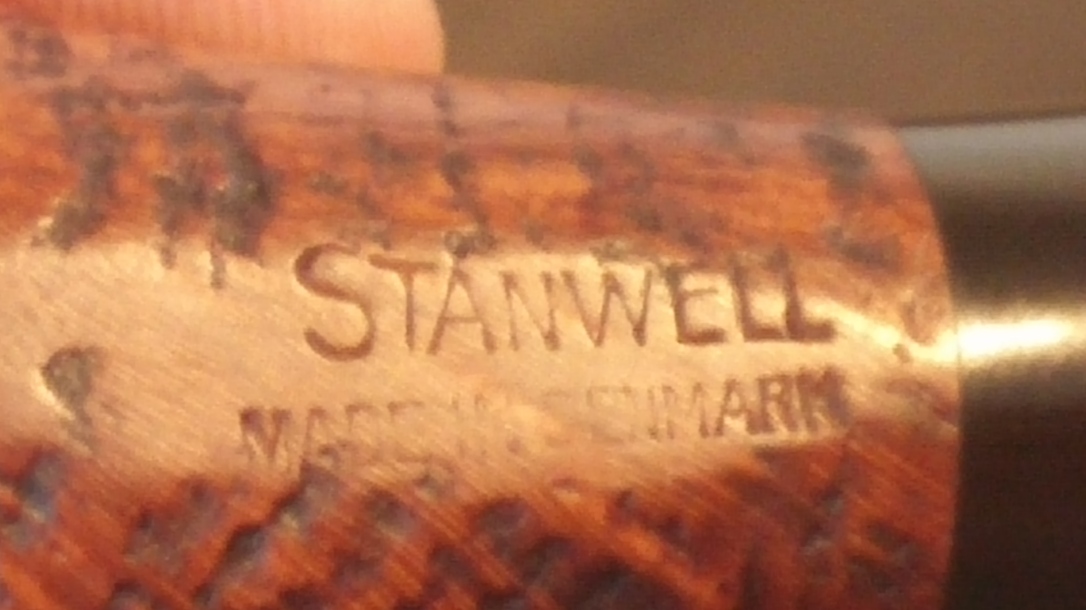
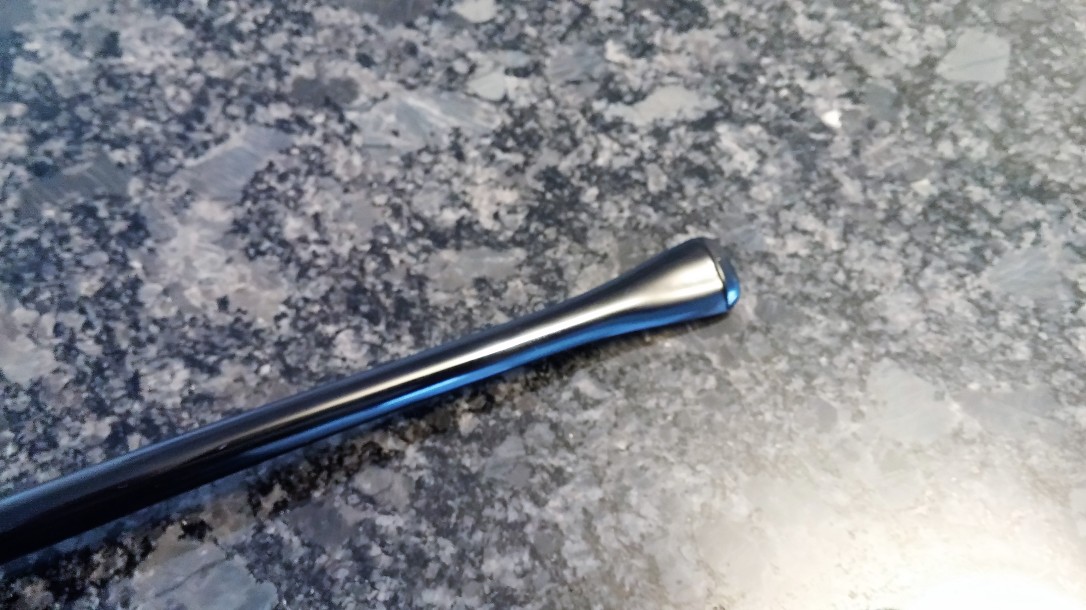


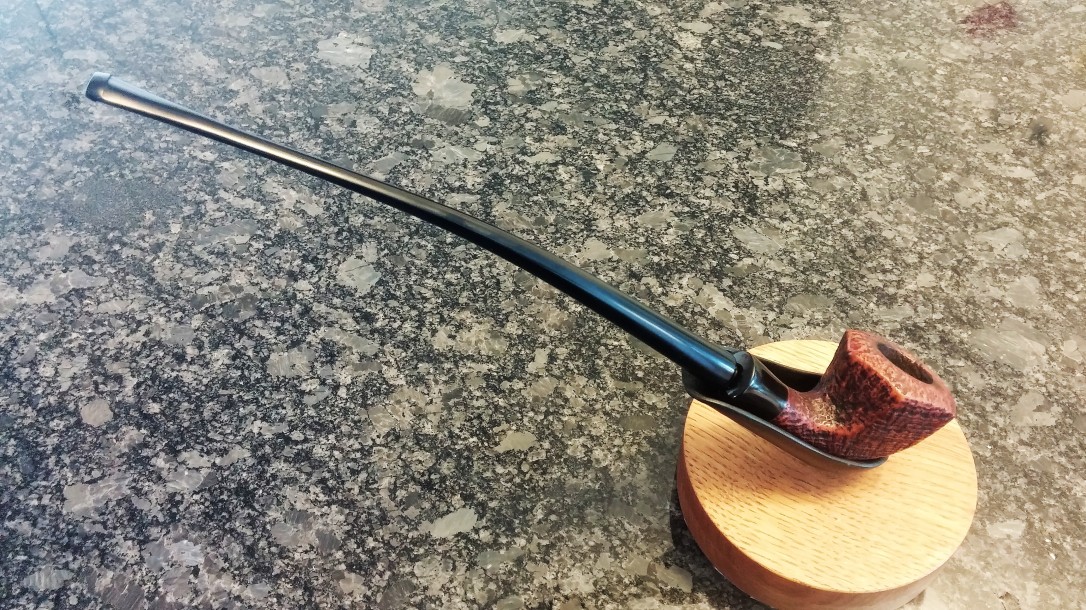


Looks great, very creative!
LikeLiked by 1 person
Cheers, Al! It was a fun project.
LikeLike
Great job and looks perfect.
LikeLiked by 1 person
Thanks Steve!
LikeLike
Reblogged this on rebornpipes and commented:
Charles offered a creative use of stems to convert this paneled horn into a beautiful churchwarden. Well done. Let’s see if some of you have also done the same…
LikeLiked by 1 person